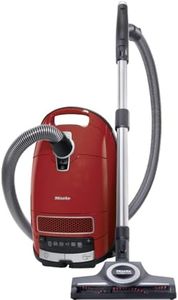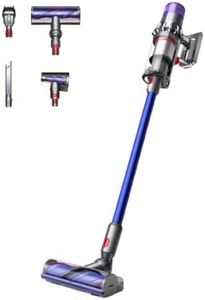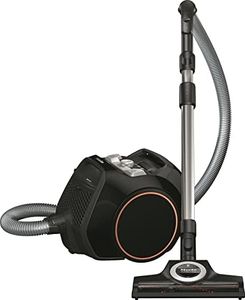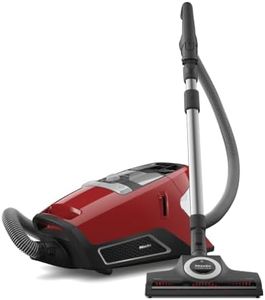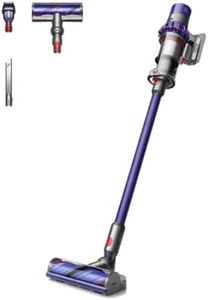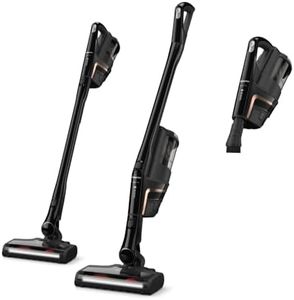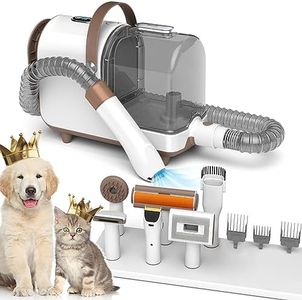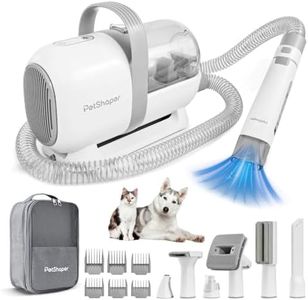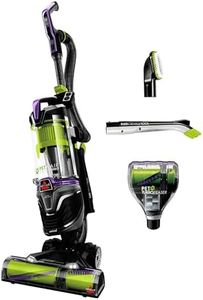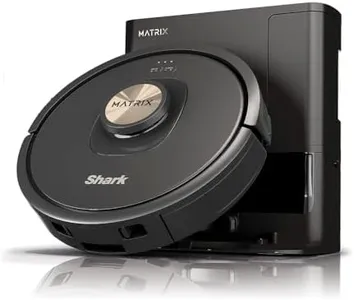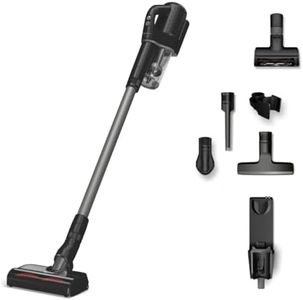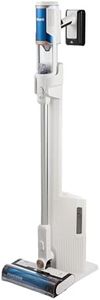We Use CookiesWe use cookies to enhance the security, performance,
functionality and for analytical and promotional activities. By continuing to browse this site you
are agreeing to our privacy policy
10 Best Vacuum For Dog Hairs
From leading brands and best sellers available on the web.By clicking on a link to a third party's website, log data is shared with that third party.
Buying Guide for the Best Vacuum For Dog Hairs
Choosing a vacuum for dog hair can make a big difference in how clean your home looks and feels when you have furry pets around. Pet hair can be stubborn, sticking to carpets, furniture, and even getting into the air. When shopping, you'll want a vacuum that can tackle these challenges without clogging or losing power. It's helpful to understand certain specifications and features so you can select a vacuum that fits both your needs and your living environment.Suction PowerSuction power refers to how strongly the vacuum can pull in dirt, dust, and pet hair. It's important because dog hair, especially when it's short or fine, often gets embedded deep into carpets or furniture. Suction power can be measured in units like air watts or kilopascals, but often you’ll just see phrases like 'high suction' or 'powerful motor.' Vacuums with higher suction are better for thick carpets or lots of pet hair, but they can also be heavier and noisier. If you have mostly hardwood or tile, you can go with a lower suction vacuum. Think about your flooring and the amount of hair your dog sheds—more hair and thicker carpets usually call for stronger suction.
Brush Type (Beater Bar / Motorized Brush)The brush type is the part that agitates the carpet and helps lift pet hairs into the vacuum. A motorized or 'beater bar' brush is ideal for pulling dog hair out of fibers. There are basic spinning brushes, and then there are tangle-free or self-cleaning designs, which help prevent hair from getting wrapped around the brush. If most of your cleaning is on carpet, a motorized or tangle-free brush head is a must. For homes with lots of hard floors, look for brushes that can be turned off or have soft rollers to prevent scratching.
Filtration (HEPA Filter)Filtration refers to how well the vacuum traps dust, hair, and allergens instead of releasing them back into the air. HEPA filters are best because they capture very small particles, which is great if you or someone in your household has allergies. Some vacuums have standard filters, while others have advanced or multi-layer HEPA systems. For allergy sufferers or those sensitive to pet dander, a HEPA filter is recommended. For others, a less advanced filter might be fine, but remember that better filtration usually means less mess and fresher air.
Capacity (Dustbin/Bag Size)Capacity is about how much hair and dirt the vacuum can hold before you need to empty it or change the bag. Larger capacity means less frequent emptying, which is helpful if your dog sheds a lot or you have multiple pets. Small dustbins are lighter and make the vacuum more compact, but they’ll fill up fast in homes with lots of pet hair. Consider how much space you have, how often you want to empty the vacuum, and how much your dog sheds when choosing dustbin or bag size.
Attachments and ToolsAttachments are extra tools that come with the vacuum to help clean different surfaces and tackle tricky spots. The most useful ones for dog hair are pet hair turbo brushes, upholstery tools, crevice tools, and stair brushes. Some vacuums come with many attachments, while others have just the basics. If your dog sheds on couches, beds, car seats, or stairs, look for a vacuum with specialized pet hair tools and flexible hoses. If you’ll mostly be cleaning floors, fewer attachments might be enough.
Ease of MaintenanceMaintenance covers how easy it is to keep your vacuum running well. Some vacuums are designed so brushes, filters, and dustbins are very easy to remove and clean—an important point because pet hair can quickly lead to clogs and odors. Simpler designs or models that don’t require tools to clean are more convenient for pet owners who will need to clear out tangled hair often. If you know you don’t want to spend a lot of time on upkeep, look for vacuums labeled as easy-clean or with self-cleaning features.
